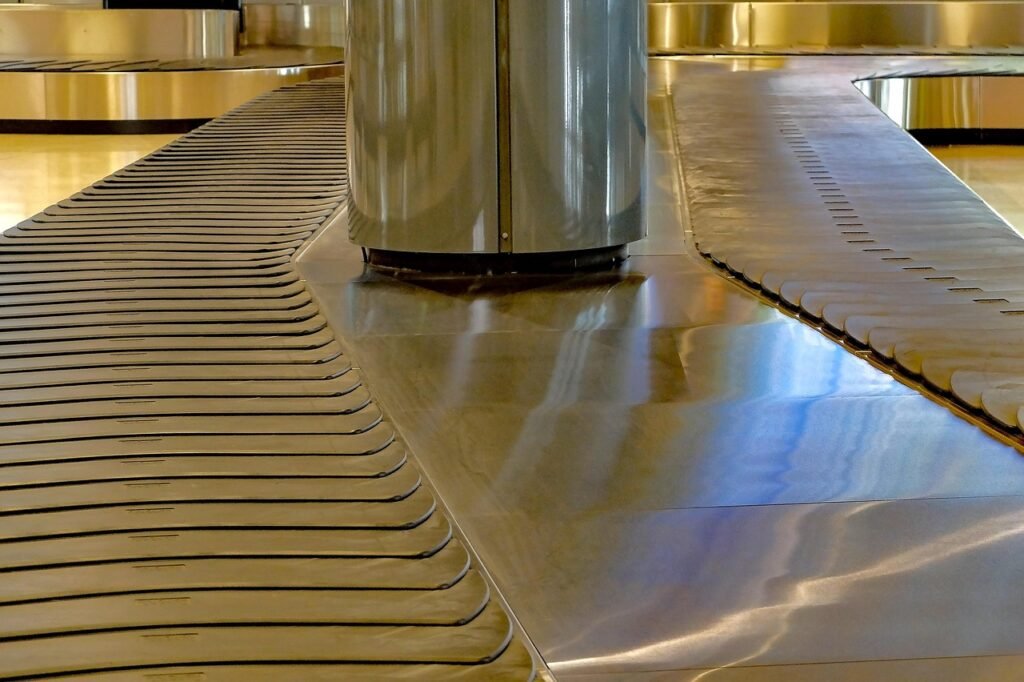If you’re involved in manufacturing or production processes, you’ve probably encountered situations where products need to be collected and organized before moving to the next stage of production. This brings us to the question: What is an accumulation table, and how does it work?
An accumulation table is a rotating platform used in production lines to temporarily store and organize products, allowing them to accumulate when downstream equipment stops or slows down, preventing line stoppages and maintaining continuous production flow. These tables are part of a broader category of accumulation conveyors designed to manage product flow in manufacturing environments.
While this basic definition gives you the general idea, there are actually several different types of accumulation tables designed for specific industries and applications. Understanding these variations and their unique features can help you choose the right solution for your specific production needs.
Different Types Of Accumulation Tables For Various Industries
The most common type is the rotary accumulation table, which features a circular rotating surface ideal for handling bottles, cans, and similar containers. These are extensively used in the beverage and pharmaceutical industries where consistent product flow is crucial.
Linear accumulation tables offer a straight-line alternative, particularly useful for products that need to maintain a specific orientation. These are common in packaging operations where products must remain aligned for labeling or inspection.
Bi-flow accumulation tables can handle products moving in two directions, making them perfect for more complex production lines where products need to be merged or divided between different processes.
How To Choose The Right Accumulation Table For Your Production Line
The first consideration should be product characteristics – size, shape, weight, and fragility all play crucial roles in selection. For instance, lightweight plastic containers require different handling than heavy glass bottles.
Production speed is another key factor. Higher-speed lines need tables with larger accumulation capacity and more sophisticated control systems to prevent product damage during accumulation.
Available floor space and layout constraints will also influence your choice. While rotary tables are more space-efficient for their capacity, linear tables might better fit certain facility layouts.
Maintenance And Operation Best Practices For Accumulation Tables
Regular cleaning and sanitization are essential, especially in food and beverage applications. Establish a routine maintenance schedule that includes checking drive mechanisms, bearings, and control systems.
Proper operator training is crucial for maximizing efficiency. Operators should understand how to adjust speeds based on line conditions and how to recognize early signs of potential problems.
Monitor wear patterns on table surfaces and guide rails, as these can impact product handling quality. Replace worn components before they cause production issues or product damage.
Common Problems And Solutions With Accumulation Tables
Product jams are one of the most frequent issues, often occurring when products bunch up or fall over. Installing proper guide rails and maintaining appropriate product spacing can significantly reduce these incidents.
Back-pressure issues can damage delicate products during accumulation. The solution often lies in implementing pressure-sensitive controls or using low-friction surfaces that allow products to slide more smoothly.
Electronic control malfunctions can disrupt synchronization with other equipment. Regular calibration of sensors and timely software updates help maintain seamless operation between the accumulation table and connected machinery.
Cost Considerations When Investing In Accumulation Tables
Initial investment costs vary significantly based on size, complexity, and features. Basic rotary tables might start around $10,000, while sophisticated systems with advanced controls can exceed $50,000.
Operating costs include power consumption, maintenance requirements, and potential part replacements. However, these costs should be weighed against the savings from reduced downtime and increased production efficiency.
Consider the long-term return on investment rather than just upfront costs. A well-chosen accumulation table typically pays for itself through improved production efficiency and reduced labor costs within 12-24 months of implementation.
Taking The Next Step In Production Line Optimization
Before making any decisions about an accumulation table for your facility, schedule a consultation with equipment vendors who specialize in your specific industry. This will allow you to see different models in action and get expert recommendations based on your unique production requirements. Having this firsthand experience and expert insight will help ensure you select the most appropriate solution for your operation.

Jennifer Marshall is a friendly and talented journalist who loves telling stories. She is an expert in writing biographies that make people’s lives shine. With clear and simple words, Jennifer creates engaging stories that everyone can enjoy. With 9 years of experience, her passion for writing helps her connect with readers and share inspiring tales.
